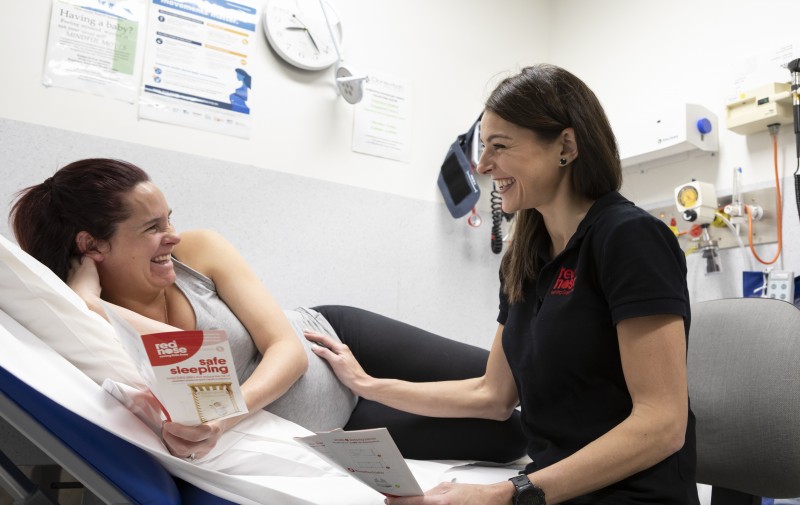Sleeping on your side from 28 weeks gestation and beyond reduces your risk of stillbirth.

This is because lying on your back in the later stages of pregnancy puts pressure on major blood vessels, which can reduce blood flow to your womb, and restrict your baby’s oxygen supply.
Research tells us that going to sleep on your side halves the risk of late-term stillbirth compared with sleeping on your back. Currently, stillbirth after 28 weeks of pregnancy affects about one in every 500 babies and is more likely to occur unexpectedly in normally developed babies whose mothers have had uncomplicated pregnancies.
Adjusting the sleeping habits of pregnant mothers has the potential to prevent stillbirth.
Red Nose recommends from 28 weeks of pregnancy, women settle to sleep on their side for any episode of sleep. This includes going to sleep at night, day time naps and returning to sleep after waking up. The going-to-sleep position is held for longest period, during which women have periods of deep sleep, so it’s very important rest on the side.
Women should not be worried if they wake up on their back; changing positions during sleep is normal. Red Nose advises women to roll back onto their side if this happens. The important thing to remember is to make an effort to start every sleep in a side lying position, even if sleeping on the back is preferred.
Sleep on your side when baby’s inside.
For more information on looking after your baby during pregnancy and preventing stillbirth, visit our advice hub.
Last modified: 2/6/21
